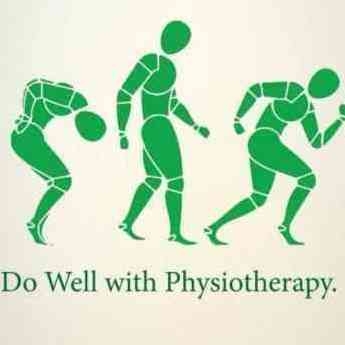+918042754929

This is your website preview.
Currently it only shows your basic business info. Start adding relevant business details such as description, images and products or services to gain your customers attention by using Boost 360 android app / iOS App / web portal.
How important is the thorax? What is it? It i...
How important is the thorax? What is it? It is the upper part of the trunk that is mainly responsible for 60% or more of trunk rotation. Yes Thorax does flexion and extension. However, it mainly contributes to trunk rotation. What about the lumbar spine? It rotates but only 3 to 5%. It doesnt rotate much but flex and extend:) Why am I talking about the thorax today? Cuz it can not be stressed enough. It is an important spinal area that contains organs and sympathetic nervous system. There are the lungs, heart, kidneys, thymus and others that are richly innervated by nerves in the thorax. What about the sympathetic nervous system? Yes the most part of the sympathetic nervous system is located in the thorax. What happens if there is a thoracic dysfunction? As mentioned above, those organs are essential throughout life which means that the dysfunctional thorax can negatively impact on them as they are innervated by the intercostal nerves. For instance, you may come across someone with upper back pain which can be complained during prolonged sitting or lifting. You may think that it is a musculoskeletal problem. However, unfortunetly, pain can not be the best guide as it can arise from anywhere. On top of that, similar pain patterns can be reported no matter where the main problem is. For example, someone with a musculoskeletal referred pain can have pain in their leg. However, it actually comes from his lower back. As this leg pain is more distinct than his back pain, this painful leg can be mistakenly considered as the root of the problem. Anyways, back to the upper back pain. Yes this can be due to a musculosksetal problem. However, what if not? It can be the heart or lungs? This is called "visceral referred pain" which can be backed up by convergence theory. What is it? Different parts of the body have different density of afferent innervation. What does it mean? Some areas have high density of the afferent innervation but others have less. For example, scratch your fingers and palm separately. They do have different sensitive intensity right? So.. Lets say that your lungs are malfunctioning in terms of breathing. As your rhomboids or erector spiane are closely located to the lungs. The afferent input from those muscles and the lungs is transmitted to the brain through the same level of the spinal cord. This means that the afferent input from those two different areas can be delivered to the same level of the spinal cord before the brain. Once the brain receives the info, it begins to interprete what this is about. Then, if this is thought to be threatening to the body, it decides to project pain signals into the origin of nociception. But hang on... where tho? It has to send pain signals to one area... Then, it may decide to send them to an area with high density of the afferent input. Yes it can be the rhomboids rather than the lungs as they may have higher density of afferent innervation. So you may think that this pain can be caused by the tight rhomboids. As a result, thoracic dysfunction in terms of abnormal breathing and/or limited thoracic rotation needs to be on your assessment list. Dont get me wrong. Im not saying that this needs to be assessed once upper back pain is reported. Its dysfunction can contribute to lumbopelvic dysfunction. How? Think of erector spiane that are attached from the Cx/Tx to the pelvis and vice versa. What does it mean to you? Yes abnormal biomechanics of the thorax can definitely result in suboptimal load transfer through the lumbopelvic region. When you walk, you dont only use your pelvis and lower limbs but also thorax whose rotation is a big part of the ambulation. If there is no thoracic rotation, you are losing arm swings then what? You can not generate power with the rigid thorax during walking. Then what? Non optimal load transfer occurs when any part of the body loses its normal range. So limited thoracic rotation means overload to wherever of your body. It can be your lower back or pelvis or legs. If someone complains about pain when walking, running, reaching and any other activity that requires trunk rotation, have a look at their thorax no matter where the pain is. Again, pain doesnt tell you much. It is a ticking bomb. Pain doesnt present straight unless it has been caused by trauma. Pain slowly appears following altered motor control that leads to microtrauma to certain part of the body. Once the brain takes this abnormal load transfer as danger, pain comes! Stop chasing pain but attempt to find the root of the problem. We tend to miss the important role of the thorax. Because there is no thoracic pain, it doesnt mean that it is functioning well. You are allowed to hypothesize whats going on but this can not be an effective diagnosis until you implement physical assessments.

